














The University of Mary focuses on the development of the whole person, for the whole of life — because, in the words of President Monsignor Shea, “We believe in eternity, so we build for today.” As such, it is only fitting that the new Lumen Vitae University Center, whose name translates to ‘light of life,’ is both literally and figuratively the heart of the campus and features celebration, social, dining, and lifestyle spaces for student bodies and community members of yesterday, today, and tomorrow.







































In August, this banner welcomed new students to the University of South Dakota School of Law. Thanks to South Dakota’s strong economy and the school’s low tuition, new lawyers graduate with both good job prospects and comparatively low debt, the school reports.

IMAGE: USD SCHOOL OF LAW
GUIDELINES FOR REFORM
AS NORTH DAKOTA EMBARKS ON A PATH OF HIGHER-EDUCATION GOVERNANCE REFORM, STATE AND NATIONAL EXPERTS OFFER IDEAS

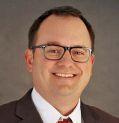
A Q&A WITH JOHN BLUEMLE, RETIRED NORTH DAKOTA STATE GEOLOGIST, ON HOW THE STATE’S GEOLOGY HAS YIELDED AN EXTRAORDINARY ENERGY BOUNTY


here are countries and there are countries, and then there is the United States. As the notion of American exceptionalism suggests, this nation stands out.
Now, here’s another notion: Midwestern exceptionalism – the idea that within the United States, the Midwest in important ways stands out.
No, not in power and not in wealth; the coasts have those categories locked up. Instead, we’re thinking more in terms of quality of life and quality of governance.
That what this issue of Prairie Business is about.
How has Bismarck, N.D., built a healthy economy in one of the most remote regions of the Great Plains? Lots of good reasons, one of them being partnerships. Bismarck’s businesses, agencies and institutions routinely “partner up” to solve problems; and when they do so, they typically discover that the whole is much greater than the sum of its parts.
WORKS TOM DENNIS
TDENNIS@PRAIRIEBUSINESSMAGAZINE.COM 701.780.1276
For the past decade, lawyers nationwide have fretted publicly and sometimes angrily about the economic storms buffeting their profession. But in key legal circles in our region, the mood seems more, “Steady as she goes.” Why? That’s the topic of another story in this issue.
And while the outcome of North Dakota’s newest higher-education reform effort is uncertain, residents should remember this point, which emerges in still another story: the last such effort, the Roundtable Report of the 1990s, won national praise.
Good reading, TOM DENNIS I welcome your feedback and story ideas. Call me at 701-780-1276 or email me at tdennis@ prairiebusinessmagazine.com.

PUBLISHER KORRIE WENZEL
AD DIRECTOR STACI LORD
EDITOR TOM DENNIS
CIRCULATION MANAGER BETH BOHLMAN
LAYOUT DESIGN, AD DESIGN ANDY GOBLE KRIS WOLFF
ACCOUNT MANAGERS NICHOLE ERTMAN
800.477.6572 ext. 1162 800.477.6572 nertman@prairiebusinessmagazine.com jlolszewski@prairiebusinessmagazine.com
Prairie Business magazine is published monthly by the Grand Forks Herald and Forum Communications Company with offices at 375 2nd Avenue North, Grand Forks, ND 58203. Subscriptions are available free of charge. Back issue quantities are limited and subject to availability ($2/copy prepaid). The opinions of writers featured in Prairie Business are their own. Unsolicited manuscripts, photographs, artwork are encouraged but will not be returned without a self-addressed, stamped envelope.
SUBSCRIPTIONS
Subscriptions are free www.prairiebusinessmagazine.com
ADDRESS CORRECTIONS
Prairie Business magazine Box 6008 Grand Forks, ND 58206-6008 Beth Bohlman: bbohlman@prairiebusinessmagazine.com
ONLINE www.prairiebusinessmagazine.com
A lot of organizations are outsourcing their IT needs and project tasks or hiring temporary employees through staffing agencies to increase their manpower. In fact, for staffing as a whole, industries are turning to temporary and contract employment as a means to plug their holes without having to dip into their hiring budget.
According to a survey from ASA Quarterly Employment and Sales, there have been 12 consecutive quarters of ow but steady growth in the months ahead.”
complexities involved, and often times, a single vendor won’t be able to cover every area of your IT department. For instance, while one vendor may specialize in servers and hardware, another vendor may specialize in software services. And juggling vendors can often be a time-consuming and costly process.
By the same token, turning to contract specialists can be a pain because they can offer little stability and continuity. They may only be used for a onsistently arise from all sides of your current IT environment.
Then there is Corporate Technologies, a single resource that can scour and place IT professionals for different businesses and industries that have the skills to seamlessly join your team. We have 175+ engineers at our disposal, and we have handled person-to-person placement as well as table.
What sets us apart?
• Access to employees that are managed by Corporate Technologies, freeing you from HR and administrative challenges.
• Utilize our existing base of 175+ full time engineers and new talent that is constantly being hired.
• From 4 hours to 40, from 2 weeks to 2 years, we can accommodate your requests.
get started. Contact us today!
Justin Stansbury is the Vice President of Corporate Technologies. Reach him at justin.stansbury@gocorptech.com or 701.893.4097.

CTO Assist - we can provide you with the design and development, information technology management, technical support and computer services. Our skilled engineers with the expertise you are looking for, can take care of an extensive range of hardware platforms and software disciplines your company retains.
• short-term or long-term technical resources
• right level of technical skills and industry exposure with out the full time commitment
• project based
• you will save up to 50% compared to standard billing rates*
* three month commitment is required
For more information on our On Site IT Placement Solutions, you can reach us at 701-893-4000

www.gocorptech.com
- we can provide you affordable access to the resources you need to expand your business, resources. Corporate Technologies manages the entire hiring process.
• resume search and review
• technical screening
• background and reference checks
• interview schedule
• payroll processing
• ongoing quality control
says
By Krista OrsackSIOUX FALLS, S.D. – The Sioux Falls community has become a premier destination for sports events in the Midwest. Multiple organizations collaborate to keep pushing the needle forward, from city departments and community entities to corporate businesses and nonprofit committees.
Because of the sheer passion and determination demonstrated, new venues and accommodations for this dominant visitor market create an economic value that is immeasurable.
An exact number can’t be placed on the hundreds of sports events that take place in the city, but through the work of the Sioux Falls Convention & Visitors Bureau, some measurements can be offered.
In 2016, the CVB worked with 61 sports events that generated more than $50 million in estimated economic impact. One youth amateur player staying overnight in Sioux Falls generates $454 a day with spending on lodging, transportation, food and beverage, retail, recreation and taxes.
When the calculation changes to one person coming for a collegiate championship, that number jumps to $657. Add a flight into Sioux Falls, and the number jumps to $777.
Two of the larger events that took place in 2016 were the NCAA Division II Men’s Basketball Championships and USA Softball Girls’ Class A 14U Fast Pitch National Championship. The NCAA event brought in an estimated 10,000 people and an economic impact of over $5.6 million, while reaching 1.15 million people airing on CBS on a Saturday afternoon during March Madness.
The softball event brought in an estimated 5,250 people and economic impact of more than $7.9 million.
In 2014, the city was awarded a 2016 NCAA Division I Women’s Basketball Regional as a part of March Madness. The bid was submitted by the Sioux Falls Sports Authority and was awarded in large part due to the reputation and relationship built over several years with the Summit League’s commissioner.
In attendance and economic impact, the event was smaller in scale; but in notoriety, it was perhaps the most prestigious sports event the city had ever hosted.
When comparing the impact of youth sports to collegiate sports, there are some differences. Youth sports such as fastpitch softball typically bring in families for every player on each team, and those families stay for a minimum of three days or more. Fan attendance for these events are typically smaller in nature, and admission fees are nominal.
In contrast, collegiate sports draw a much larger fan attendance, higher ticket and venue revenue and earned media value that you can’t buy.
This year, the largest event the city has ever hosted from an attendance, room nights and economic impact perspective took place. The U.S. Youth Soccer Midwest Region II Championships brought in 15,000 people, including 5,000 athletes and coaches and an estimated impact of more than $17.5 million.
Premier events such as the Summit League Men’s and Women’s Basketball Championships attracted more than 65,000 people (counted through ticket sales), with the estimated economic impact coming in at over $7.5 million. And that doesn’t account for the media value of two games airing on ESPN and ESPNU.
Throughout the year, games played by the two local Division II universities, the two Division I universities located 45 minutes north and south, and semi-professional sports teams provide an on-going stimulus to the economy from visiting players, families, and fans.
Next year, the city will continue its run of successful events and welcome some that are new, including the NCAA DII Men’s and Women’s Basketball Elite Eight, NCAA Division I Men’s Hockey Regional and the Sanford International presented by Cambria, a PGA TOUR Champions event.
The CVB has been prospecting and pursuing sports events to be held in Sioux Falls for more than 30 years, but just a few years ago realized an opportunity to commission the phrase “Road to Sioux Falls” to further position the city as a leisure sports destination. Marketing campaigns encourage visitors to come to Sioux Falls as a part of a weekend trip or a family vacation.
When sports events come to Sioux Falls, residents benefit, more jobs are created, businesses flourish and sales tax increases. Hundreds of volunteers commit their time and energy to make these events possible. And with all of us working together, the sports market continues to thrive. PB
*Note: Economic impact calculations were supplied by Destinations International’s Sports Impact Calculator V.3.0.
Krista Orsack DIRECTOR OF MARKETING SIOUX FALLS CONVENTION & VISITORS BUREAU 605.373.2036 | VISITSIOUXFALLS.COM
The influx of teams, fans and families generates $50 million in annual economic impact, the marketing director of the Sioux Falls Convention & Visitors Bureau










Once this campaign is complete, NSU will be the recipient of more than $100 million in privately funded building projects and scholarships within a decade.
In a community of only 30,000 people and an institution with 3,600 students, that is a historic level of support – and it’s crucial due to the growing importance of philanthropy in higher education. According to the South Dakota Board of Regents, over the past 20 years, only 4 percent of funds from infrastructure and building projects have come from South Dakota state dollars. That’s more than $1 billion that our six South Dakota Board of Regents institutions have needed to generate.
According to the Council for Advancement and Support of Education (case.org), charitable giving to education is projected to rise 6 percent in 2018, with overall charitable giving in the United States growing at 3.8 percent. All types of donors – individuals, foundations, corporations and estates – are likely to increase their annual giving, with individuals leading the philanthropic charge.
In a time of heightened concern over state budgets, our campus has taken an entrepreneurial approach. Fortunately for Northern State — and the School for the Blind and Visually Impaired, which is also a Regents institution – our stakeholders stepped up in a transformational way.
In broad terms, the $100-plus million is divided out like this:
■ $40 million to classroom buildings
■ $30 million to residence halls
■ $30 million to athletics
■ $15 million to the South Dakota School for the Blind and Visually Impaired
■ A recent donation of $5 million in scholarships
This funding revolves around the entire student experience. It is my belief that in order for universities to succeed, we must create worthwhile and unique experiences for our students. We can no longer expect students to show up at our doors; all of higher education is fighting for the same piece of the pie, namely recruiting the same students.
Our two institutions have a dream. We aspire to offer a superb education and facilities for blind and visually impaired students, as well as provide the best training for instructors of the visually impaired in the nation. This is not just for the NSU Millicent Atkins School of Education; we have high aspirations for all students, faculty and staff – regardless of their program or major.
By Tim DownsABERDEEN, S.D. – Throughout my 30 years in higher education, I’ve lived in communities comprised of ardent university advocates – and in places where community members simply acknowledge a campus exists. When I took over as the 17th president of Northern State University in 2016, I immediately felt an overwhelming level of support from the community of Aberdeen.

Case in point: the recent announcement that our foundation has already secured $25 million in pledges for our Educational Impact Campaign (educational-impact.com). This $45 million campaign focuses on a new School for the Blind and Visually Impaired, two new athletic and recreation fields and an on-campus regional sports complex for our football and softball teams.
In 2017, the South Dakota Board of Regents and the South Dakota Chamber of Commerce and Industry produced an economic impact report confirming that Northern State University generates $229 million in annual economic impact, from a state investment of only $12.9 million. This return did not go unnoticed; in fact, it prompted a flurry of conversations on how our community can turn that amount into $250 million – or even $300 million.
Higher education is and will remain a worthwhile investment, and Northern State is blessed to have supporters who agree.
I know from 30 years of experience that not all communities have the ability to support their institutions at the level of our stakeholders. I also believe that in order to venture ahead, colleges and universities will need to embrace philanthropic supporters and organizations.
I speak for the Aberdeen region when I say: thank you to our investors, and go Wolves! PB
Tim Downs PRESIDENT NORTHERN STATE UNIVERSITY ABERDEEN, S.D. PRESIDENT@NORTHERN.EDUAt state-run colleges and universities today, philanthropy makes all the difference










FARGO, N.D. – Noridian Healthcare Solutions has named Paul Wilson as president and CEO of the company.
Wilson had served as interim president/CEO of NHS following former president and CEO Tom McGraw’s departure in June 2017. His position was made permanent effective Nov. 13.
Wilson’s health care leadership career began with Banner Health Systems, previously known as Lutheran Health Systems, where he served as CEO of Los Alamos Medical Center in Los Alamos, N.M., from 1987 to 2000. He also held CEO positions at Innovis Health, now known as Essentia Health, from 2001 to 2005, and at DMS Health Technologies from 2006 to 2014.
In 2014, Wilson accepted a position as president of Fergus Falls, Minn.-based Lake Region Healthcare, where he served until joining NHS in 2016 as senior vice president and chief administrative officer.
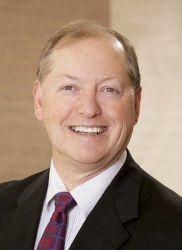
Wilson holds a master’s degree in hospital administration from the University of Minnesota.
FARGO, N.D. – Starion Bank has hired Tom Boyer as mortgage banking manager and vice president.

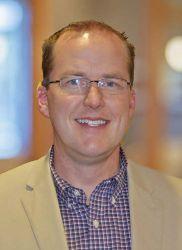
Based in Fargo, Boyer manages teams of mortgage lenders in Fargo and Bismarck, N.D., and Madison, Wis.
Boyer has managed mortgage lending departments and originated mortgages in Fargo since 1990. He earned a bachelor’s degree in management from Minnesota State University – Moorhead and is involved in FM Raise Your Spirits, an organization that assists the community and celebrates volunteerism.
Boyer is also a retired volunteer firefighter and former board member and treasurer of FM Athletics.
Pederson earns
BISMARCK, N.D. – Kevin Pederson, an engineer at KLJ, earned his professional engineering license in North Dakota.

Pederson earned a bachelor’s degree in civil engineering from North Dakota State University. He is also registered in the state of Minnesota.
Pederson works in KLJ’s Fargo office.
FARGO, N.D. – Jeremy Alinder has been appointed vice president of finance at Ulteig, a provider of design engineering, program management and technical and field services.
After a brief transition period, Alinder will become the company’s chief financial officer.
Alinder served most recently as CFO for U.S. operations for Fluence Corp. Before that, Alinder held leadership positions in multiple organizations, including Hillcrest Capital Partners and Pentair.
He also served as an independent consultant, helping large construction and agriculture companies with growth plans and acquisition strategies.
Alinder has bachelor’s degrees in both accounting and finance from the University of St. Thomas, as well as an MBA in finance from the University of Minnesota’s Carlson School of Management. He is a certified public accountant (inactive).
BROOKINGS, S.D. – John Killefer, professor and department head of animal and rangeland sciences at Oregon State University, has been named dean of the College of Agriculture and Biological Sciences at South Dakota State University.
Killefer has served in his current role since 2012. During that time, he merged the departments of animal sciences and rangeland, ecology and management to form the Department of Animal and Rangeland Sciences. He also completed construction on three facilities and numerous renovations to other facilities.
His research focusing on high-quality production animals and meat products programs has secured more than $6.3 million from both federal and industry sources.
Killefer was inducted into the Oregon Beef Council Hall of Fame in 2014.
Killefer went to OSU in 2011 after nearly 10 years at the University of Illinois at Urbana-Champaign, where he was an associate professor and later professor. He was an assistant professor and associate professor at West Virginia from 19942002.
He earned his bachelor’s degree in biological sciences at Hastings College in Nebraska. He earned his Ph.D. in animal science with an emphasis in growth and development at Oregon State.
Killefer will begin his duties in March.

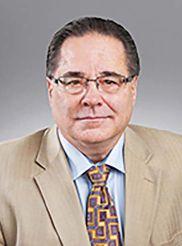
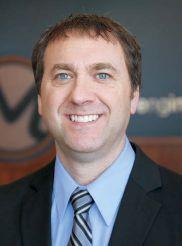
GRAND FORKS, N.D. – Dr. David Schmitz, professor and chair of the Department of Family and Community Medicine at the University of North Dakota School of Medicine and Health Sciences, has been appointed the American Academy of Family Physicians’ representative to the National Quality Forum MAP (Measure Applications Partnership) Rural Health Workgroup.
Similarly, Dr. Aaron Garman, a UND medical school graduate, family physician and the medical director at Coal Country Community Health Center in Beulah, N.D., has been named co-chair of the NQF workgroup.

Founded in 1999, the National Quality Forum is a nonprofit group that works to catalyze improvements in health care. NQF measures and standards serve as a foundation for initiatives to enhance health care value, make patient care safer and achieve better outcomes.
The federal government, states and privatesector organizations use NQF-endorsed measures to evaluate performance and share information with patients and their families.
The MAP Rural Health Workgroup provides recommendations on issues related to measurement challenges in the rural population. Additionally, the workgroup works to identify a core set of the best available measures and identify rural-relevant gaps in the measurement of health outcomes.
FARGO, N.D. – Josh Hinds has joined Houston Engineering Inc’s Fargo office as a senior traffic engineer.
Hinds will be leading traffic engineering services for all HEI locations. He brings more than 11 years of transportation and traffic experience in the industry and has served multiple agencies, including the North Dakota Department of Transportation, the South Dakota Department of Transportation, cities, counties and various other local entities.
Hinds holds a bachelor’s degree in civil engineering from South Dakota State University, a master’s in civil engineering from Iowa State University and an MBA from North Dakota State University.
He has worked as a project manager on many transportation and traffic engineering projects throughout North Dakota and South Dakota and is a registered professional engineer in North Dakota, Minnesota, South Dakota and Iowa.
FARGO, N.D. – Two providers recently joined the Sanford Health Fargo team.

WEST FARGO, N.D. – Tracy Eslinger, Luke Arnold and Dustin Scott graduated from the American Council of Engineering Companies of North Dakota Emerging Leadership Institute.
Eslinger is a senior project manager in the municipal group at Moore Engineering’s West Fargo office, where he’s worked since 2001. He is a licensed professional engineer in North Dakota and Arizona.
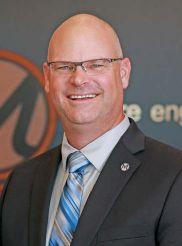
He earned his bachelor’s degree in civil engineering from North Dakota State University and is a member of the American Society of Civil Engineers, the National Society of Professional Engineers and the North Dakota Society of Professional Engineers.
Arnold is a senior project engineer and the municipal group leader for Moore Engineering’s Bismarck, N.D., and Minot, N.D., offices. He’s been with the company since 2012, in addition to 20 years of engineering experience in Wisconsin and Illinois.

Arnold earned his bachelor’s degree in civil and environmental engineering from Marquette University in Milwaukee, Wis. He’s a registered professional engineer in North Dakota and Wisconsin and is a member of the National Society of Professional Engineers and the North Dakota Society of Professional Engineers.

Scott is a senior project manager at Moore Engineering’s West Fargo office, where he’s worked since 2007. He is a licensed professional engineer in North Dakota and Minnesota, and earned his bachelor’s and master’s degrees in civil engineering from the University of North Dakota.
Scott serves as the city engineer for the city of West Fargo and is a member of ACEC/ND, the American Society of Professional Engineers and the American Public Works Association.
Ethan Brenna received his master’s degree from Arcadia University in Glenside, Penn. He specializes in genetics counseling at Sanford Broadway Clinic.
Dr. Harry Weiser received his medical degree from the University of Kentucky College of Medicine in Lexington, Ky. He specializes in neurosurgery at Sanford Neuroscience Clinic and is board certified in neurosurgery by the American Board of Neurological Surgery.
Don’t be fooled by North Dakota’s comparatively flat terrain, says John Bluemle, retired North Dakota state geologist. The state’s geology has a Rocky Mountain-sized impact, especially where energy resources are concerned.
IN YOUR 2016 BOOK, “NORTH DAKOTA’S GEOLOGIC LEGACY,” YOU OFFER A VIVID MODEL OF GEOLOGIC TIME – ONE THAT YOU CREDIT TO DONALD SCHWERT, PROFESSOR EMERITUS OF GEOLOGY AT NORTH DAKOTA STATE UNIVERSITY. COULD YOU SHARE IT WITH PRAIRIE BUSINESS READERS, PLEASE?

The model gives readers an idea of the vastness of time and a sense of the immensity of geologic history. It compares geologic history to something that people understand: the length of Interstate Highway 94, west to east, through North Dakota.
The Earth is 4.6 billion years old. In the I-94 timeline, the 350mile distance across the state, from Beach to Fargo, represents those 4.6 billion years. Bismarck, almost half way through the state, would be a little over two billion years into the age of the Earth. Primitive life such as algae would exist.
The Bakken oil formed 359 million years ago, 91 percent of the way, near the Buffalo-Alice exit on I-94. Dinosaurs showed up near Casselton, 94 percent of the way, and died off in West Fargo.
The earliest humans arrived halfway through Fargo. And North Dakota became a state just a half inch before we reach the boundary between Fargo and Moorhead, Minn.
REGARDING THE DEVELOPMENT OF NORTH DAKOTA’S ENERGY RESOURCES, WHAT ARE SOME OF THE KEY POINTS ALONG THAT TIMELINE?
Lignite, which outcrops in many places in the western two-thirds of North Dakota, was used by the American Indians for centuries. In 1805, Lewis & Clark gathered it from the banks of the Missouri River. In 1867, tests were conducted at Fort Stevenson, near modern-day Washburn, N.D., to determine the BTUs in lignite.
Before 1900, gas was known on the Cedar Creek Anticline, in southwestern North Dakota and southeastern Montana. In 1912, it was used for heating and streetlights in Baker, Mont. About 1910, in north central North Dakota, shallow gas was discovered and used for domestic purposes in Mohall, N.D., and regional farms.
The Williston Oil Basin was named in 1916, and the first dry-hole oil well was drilled that year. Numerous dry holes were drilled into the 1940s. In 1951, the Clarence Iverson No. 1 well, completed near Tioga, N.D., resulted in the first economic production of oil in North Dakota.
For more than 50 years, successful oil wells produced from many non-shale horizons. It wasn’t until this century that technology developed to the point that the oil-rich Bakken shale was productive.
Probably the most important feature about North Dakota’s geology is the deep Williston Oil Basin. Two-thirds of the Williston Basin is in North Dakota, the biggest oil producing basin on the continent. Due to this geologic feature, we have a massive petroleum resource and currently rank second in the United States in oil production. The Basin also provides a large supply of coal and natural gas.
Second, our plains topography leads to unimpeded air flow. We’re America’s “windiest” state, and wind energy provides ever-increasing amounts of power. We even have potential hydrogen production from wind.
North Dakota also has and continues to develop nearly all of the other major energy sources. These include solar, hydropower, biofuels (liquid and gas), and geothermal (ground-source heat).
The popularity of geothermal systems in North Dakota has been related more to economics than geology. As the economics (including tax advantages) change and other ways of providing heat become relatively less expensive, the financial benefit of geothermal heat pumps disappears.
Ground source (geothermal) heat pumps are popular in North Dakota because they are most efficient in extreme climates with hot summers and cold winters. Geology is important from a driller’s perspective and also in terms of thermal conductivity, but only because it factors into the design and placement of the geothermal system –especially a large, commercial one, such as at the North Dakota Heritage Center or at Davies High School in Fargo. Geology does not have much influence otherwise.
Lignite underlies much of the western two-thirds of North Dakota and is exposed downward from the land surface to depths reaching 1,800 feet. We mine the uppermost few hundred feet.
North Dakota is one of the country’s top 10 coalproducing states, mining about 30 million tons of lignite coal annually. About 80 percent is used to generate electricity, 13 percent is used to make synthetic natural gas, and 7 percent is used to produce fertilizer products.
Gasification of lignite began near Beulah, N.D., in 1984 in the nation’s only coal-to-synthetic natural gas or “syngas” plant. The plant produces a variety of agricultural fertilizer products. The gasification process captures 8,500 tons of carbon dioxide daily, which is piped to oil fields in Saskatchewan to re-pressurize depleted oil fields.
North Dakota’s lignite industry, with an economic impact exceeding $3 billion a year, provides low-cost power to two million customers in five states. Electricity is generated at six lignite-fueled power plants in western North Dakota and eastern Montana. The average consumer price of the electricity generated is less than half what residents of states on the east and west coasts pay.
In 1956, the year I started college, M. King Hubbert, an American geologist and geophysicist, predicted that U.S. oil production would peak in 1976. My college professors taught Hubbert’s “peak oil” theory as gospel, and I remember later arguing with my office partner at the North Dakota Geological Survey about it. He was a retired oil man, and he thought the idea was ridiculous: “When we think we’ve run out of oil, we’ll just go out and find more,” he said.
As he predicted, continuing advances in extraction technology – particularly those that led to the extraction of tight oil and oil from shale – drastically changed the picture.
The Williston Basin Bakken, in northwestern North Dakota, northeastern Montana and southern Saskatchewan, along with other shale oil reserves such as the Marcellus Shale in eastern North America and the Barnett Shale in Texas, dwarf the kind of traditional resources Hubbert was dealing with in the 1950s. One recent estimate of the amount of oil remaining worldwide is about 1,700 billion barrels. That is a lot of oil!

IN 2001, YOU WROTE THE FOLLOWING: “PERHAPS SOME OTHER NEW TECHNOLOGY WILL BE DEVELOPED THAT WILL ALLOW THE HYDROCARBONS TRAPPED IN THE SHALE TO BECOME MOBILIZED AND PRODUCED AT ECONOMIC RATES. IF THIS HAPPENS, MANY WELLS WILL BE DRILLED FOR THE OIL AND GAS IN THE BAKKEN FORMATION.”
A PRESCIENT OBSERVATION! WHAT ARE YOUR THOUGHTS NOW ABOUT WHAT THE NEXT 10 YEARS MIGHT BRING?
The “new technology” I mentioned in 2001 turned out to be hydraulic fracturing. It was patented in 1866, tested in the 1940s and used in the United States (in the Barnett Shale in Texas) in the 1980s. But it wasn’t until hydraulic fracturing was improved to a certain point, and then combined with horizontal drilling, that production of North Dakota’s Bakken oil took off.
The next big step in improving production in shale reservoirs like the Bakken may be done by engineering at the nanometer scale. We currently leave far more oil in the ground than we produce, and to recover a significantly higher percentage of it, we need to greatly improve our technology.
The oil we now leave behind is in tiny, unconnected pores and can’t move from where it is. Research analyzing fluid flow continues as we hunt for ways to let the trapped, tiny oil particles flow. Improved computer technology is now analyzing the physics, fluid flow and so on far more effectively than could be done in the past. It may even be possible to change the shape of the trapped oil droplets, thereby allowing them to move more easily.
YOU’VE DONE FIELD WORK IN EVERY COUNTY IN NORTH DAKOTA. WHAT ARE SOME OF YOUR FAVORITE CAFES AND OTHER OUT-OF-THE-WAY ATTRACTIONS?
North Dakota is filled with outof-the-way attractions. Among my favorites is the top of Cow Butte in Adams County with its ancient, polygon-patterned rock surface, containing fossilized footprints.
I won’t list favorite existing cafes because there are too many good ones, but one of my many favorites from the past was in either Ryder or Makoti, N.D. While doing geology field work in Ward County in 1987, I came across a small cafe where at noon, the lady in charge made 12 dinners –only 12 – and in order to get one, you had to be there on time. The food was great, and I made sure I managed to be there on time while I was working in the area!
Editor’s note: Bluemle retired in 2004 after 42 years with the North Dakota Geological Survey. From 1990 until his retirement, he served as the survey’s director and as North Dakota state geologist.
His book, “North Dakota’s Geologic Legacy,” was written some years after his retirement. It was published in 2016 by the North Dakota State University Press and deals with the character of North Dakota’s landscape and how it formed. Many of the questions dealt with in this Prairie Business interview are covered in the book, but in greater detail.
The book is written for non-geologists and can be ordered from the NDSU Press (ndsupress.org) or from Amazon. It’s also available at the North Dakota Heritage Center and most bookstores in the state.

A WIFE. A MOTHER. A SISTER. A FRIEND. A HORSE LOVER. A VOLLEYBALL PLAYER. A DECORATOR. A PROJECT DESIGNER. ACKERMAN-ESTVOLD.

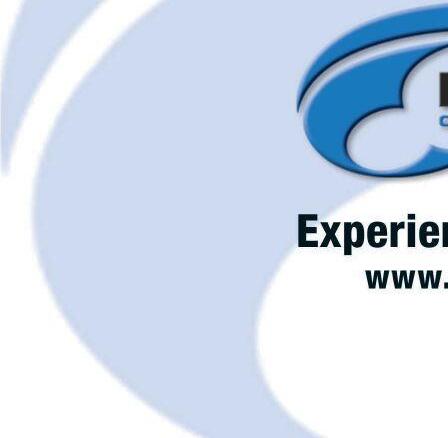
Meet Kimberly. She’s a creative and enthusiastic project designer on our architecture team. At Ackerman-Estvold, she’s busy designing and building numerous facilities throughout the state. But we know there is more to Kim than floor plans and elevations.



As a mom, she’s busy building a different kind of foundation; one of faith and family. She loves her community and is excited to help it grow. Whether Kim is out on a trail enjoying a North Dakota sunset or constructing Lego® buildings on the living room floor, she’s planning a future that’s not only bright for her, but for all of us.

BISMARCK, N.D. – Efficient, economical and unadorned, the Capitol skyscraper in Bismarck says a lot about North Dakota’s values. But those who’d like to learn more about Bismarck itself should seek out another local landmark: the MDU Resources Community Bowl, longtime home of the state track meet.
The facility is managed by a joint powers agreement that was set up by Bismarck, Bismarck schools, Bismarck Parks and Rec and the State Board of Higher Education. Bismarck State College, the University of Mary and St. Mary’s High School also use the bowl and have a hand in its governance.
Then there’s the Bismarck-Mandan Chamber of Commerce Foundation, which recently raised $8 million to renovate the bowl, and MDU Resources, which earned naming rights by giving $2 million.

Clearly, an even better name for the facility might be the Partnership Bowl.
Because partnerships are a big part of what Bismarck’s all about.
In Bismarck, agencies and institutions routinely ‘partner up’ for their own and the community’s goodThe MDU Resources Community Bowl in Bismarck, site of the North Dakota State Track Meet and other events, owes its construction, renovation and management to extensive community partnerships. IMAGE: JLG ARCHITECTS, architects for the renovation project
“If I were to describe something in Bismarck that is unique, it would be the number of partnerships that Bismarck has been able to pull off,” said Brian Ritter, president of both the Bismarck Mandan Development Association and the Bismarck-Mandan Chamber of Commerce.
“We have two universities that say they don’t compete with each other, they complement. The airport has used the business community to guarantee revenue for flights. We have two hospitals that share a cancer center.
“Those are unique situations that you don’t see as often in other places,” Ritter said.
Bismarck Mayor Mike Seminary agreed, though he noted that collaboration is a trait shared across all of North Dakota. Consider the Red River Valley, where whole populations line the banks to toss sandbags when the rivers rise in a city.
“What we learn from those times is this: You have to have your neighbors’ back – even those neighbors you don’t like,” Seminary said.
“Sometimes, the elements are far more powerful than we are. And that’s something that really shapes the people’s character, because we have to roll up our sleeves and help each other out.”
While Seminary’s right that the trait is shared, Ritter’s right, too: Bismarck stands out.
Here are a few examples that show how.
On North 7th Street in Bismarck sits Sanford Health. On North 9th Street – two blocks due east – sits Bismarck’s other hospital, CHI St. Alexius Health.
“And we’re on North 8th Street,” said Amy Gross, executive director of the Bismarck Cancer Center, a joint venture of the two hospitals.
“We’re right in the middle. That’s great, because we collaborate with all of the physicians at both hospitals, and it’s so convenient for patients who have appointments on either side.”
At the heart of the Cancer Center are linear accelerators – radiation therapy machines that can cost $4 million each. Back in the 1990s, the hospitals decided that one standout center of such technology would be better and more efficient than two more modest ones.
The Bismarck Cancer Center was the result. “And what the partnership means is that we’re able to offer state-of-the-art care,” Gross said.
“When we compare ourselves to bigger organizations across the country, we see that we’re leading the charge. In a small city like Bismarck, that’s because of the support of both hospitals, so we just feel so lucky.”
The nonprofit center has a staff of about 48 and sees 50 to 60 patients a day.
“Three members of our board are from CHI, and three are from Sanford,” Gross said.

“When they meet, they take off their hospital hats so to speak, and they put on their Cancer Center hats.
“Again, we’re so fortunate to have these competing organizations work together on this, because it really has changed how we care for our patients.”
Years ago, Bismarck had only one airline, and that airline flew to only one place: Minneapolis.
Today, three year-round and two seasonal airlines serve Bismarck. That lets travelers fly nonstop to Minneapolis, Denver, Dallas, Chicago, Orlando, Phoenix and Las Vegas, depending on the time of year. Economic growth has something to do with that. Partnerships do, too.
“In the case of both Frontier and American airlines, the business community came together with the city of Bismarck to offer a minimum revenue guarantee,” Ritter said.

“Using money raised from both the public and private sectors, we were able to promise the airlines that if for whatever reason our traffic didn’t meet their demand, we’d raised x-amount of dollars to help them make this work.”
As a Bismarck Tribune editorial noted in support of the guarantees, “If we want our city to continue to be economically healthy, vibrant and growing, we must work hard to attract businesses.”
And as with airports, so, too, with child care – a service that matters almost as much as air travel to a community’s growth.
In Bismarck, three economic mainstays took action when a shortage of child-care openings loomed. Specifically, they partnered, teaming up with the YMCA to create a new facility with designated slots for the partners’ employees.
The 18,000-square-foot YMCA Youth Development Center North was the result. It can hold 240 children to age 5, with 200 of those spots reserved for employees of the Y and the three corporate partners: Sanford Health, Basin Electric and CHI St. Alexius.
“It’s going very well,” said Amber Rae Bernhardt, marketing director for the Missouri Valley Family YMCA. “It grows every year, and it’s able to start filling new rooms and new spaces. We’ve all been really pleased.”
“It was dull. It was drab. It was just like any other alley,” said Bismarck Mayor Seminary.
“Now, it’s an attraction.”
Seminary is talking about Alley 5.5, a public/private partnership that used donations to paint large murals on the walls of a downtown Bismarck alley. The project was organized by the nonprofit Dakota West Arts Council, and followed a similar effort that resulted in public art gracing 13 traffic-light utility boxes downtown.
“We consider arts and culture a part of economic development,” said Eileen Walsh, the council’s executive director.
“Think about an alley that now is being seen by thousands. There are people walking through it all the time. … The council and the city took a leap of faith on this, but it’s paying off for the community.”
Seminary agreed. “Young people, the Chamber, city leadership and the Arts Council said this is something important to us, and they got it done. I couldn’t be more happy.”
Last but not least, consider Bismarck State College and the University of Mary, crosstown rivals with different missions and cultures – BSC public and offering mostly two-year degrees, Mary a private Christian university – but key points of cooperation.
For example, “we have what’s called a 2+2 Seamless Transfer Program,” said Chip Hinton, director of undergraduate admissions at the University of Mary.
The program helps students work toward their bachelor’s degree from University of Mary while earning an associate’s degree from BSC.
“In fact, we even have an admissions representative who works parttime over there at BSC,” Hinton said.
“I have no worries about that in terms of trust because they are such good neighbors to us, and we certainly hope that we are good neighbors to them.”
Furthermore, “as much as we love the program, the students really love the fact that they can transfer from one school to the other without a lot of hassle.”
The schools also have cooperated on theater and other projects.
“I came here a year ago from the greater Atlanta area, and Atlanta is famous for southern hospitality,” Hinton said.
“So I definitely can judge when these kinds of partnerships are authentic and real. I’ve been impressed because here, they’re real.” PB








GRAND FORKS, N.D. – Esquire Never. Inside the Law School Scam. Law Lemmings. Third Tier Reality.

And a few other names that can’t be printed here.
In parts of America, the Great Recession hammered the economics of practicing law, and underemployed lawyers’ angry “scam blogs” (such as the ones listed above) have swung mallets at the situation ever since.
“My goal is to inform potential law school students and applicants of the ugly realities of attending law school,” declares one, with the alleged “reality” being “your huge investment in time, energy and money does not, in any way, guarantee a job as an attorney.”
Make no mistake, the national numbers have been sobering. Between 2008 and 2011, some 15,000 attorney and legal-staff jobs at large firms “vanished,” the New York Times reported. Unemployment among lawyers in some markets rose, applications to many law schools dropped. More recently, a few law schools have merged or even closed.
But …
That’s not the whole picture.
In North Dakota, South Dakota and western Minnesota, it’s not even very close.
“I have never had anyone say to me there are too many lawyers in North Dakota,” said Tony Weiler, executive director of the State Bar Association of North Dakota.
“Believe me, lawyers love to voice their opinions. And I think if they all of a sudden started to not have any work, we would hear about it.
“Based on that and other factors, I know lawyers are busy, and there is demand.”
Eric Schulte, former president of the State Bar of South Dakota and a partner in the law firm of Davenport Evans in Sioux Falls, S.D., agreed.
“There really are opportunities to practice law in South Dakota,” Schulte said.
“I don’t think it’s the same situation as some of the bigger markets that you find on the East and West coasts. I think that our economy tends to be robust and healthy here, and I can tell you that from my perspective, we need more lawyers in South Dakota.”
New graduates of the UND and USD law schools have two key advantages: Decent opportunities in the region, and comparatively low debtThe Class of 2017 at the University of South Dakota School of Law gathers after their Hooding Ceremony, a tradition that recognizes the conferring of a doctoral degree. IMAGE: LIFETOUCH NATIONAL SCHOOL STUDIOS
Like other key elements of the economy, the legal profession in Prairie Business’ circulation area largely avoided the national recession’s most serious effects, interviews and statistics suggest.
Don’t misunderstand. As with the region’s housing market and household incomes, a big reason why the lawyers’ jobs didn’t “bust” is that they’d never “boomed” in the first place.
Instead, the region’s always-more-modest market for lawyers simply improved steadily.
That “always more modest” description is important to understand.
“If you’re thinking about a market like New York or Chicago, or if you’re expecting your first job as a lawyer to pay over six figures, you have to understand that that’s not realistic for North Dakota,” said Kathryn Rand, dean and professor at the Grand Forks, N.D.-based University of North Dakota School of Law.
“That’s not our character, that’s not our goal. We’re upfront with students that this is a different market and a different path.”
And in both North Dakota and South Dakota, that path tends to result in a first job out of law school that pays roughly $50,000 to $65,000.
But the context is vital when considering those sums.
For one thing, new lawyers who’ve worked hard can be reasonably confident of finding a job in that range. “Definitely in South Dakota, there are jobs for our grads,” said Devra Sigle Hermosilla, director of career services at the University of South Dakota School of Law in Vermillion, S.D.
“At graduation, about 70 percent of the Class of 2017 was employed already.”
And 10 months after graduation, some 91 percent of USD Law’s Class of 2016 had jobs for which a law degree was either required or preferred, a measure of job quality. That’s well above the national average, which is about 75 percent.

At the University of South Dakota School of Law, MacKenzie Lawrence ’18 (speaking) and Brian Griffin ‘18 (left sitting) and Zachary Meisler ’18 (right sitting) practice trial techniques in USD Law’s Courtroom. The law school’s employment rate for new graduates ranks above the national average.
IMAGE: USD SCHOOL OF LAW
For another thing, USD and UND are two of America’s least expensive nationally ranked law schools. Law students at New York University pay about $64,000 a year in tuition and fees; for North Dakota residents at the UND law school, the comparable figure is about $12,000.
As a result, graduates leave the UND and USD law schools with comparatively low debt – about $66,000 at UND and $57,000 at USD, far lower than the $160,000 that many graduates of private law schools incur.
That’s hugely important. “For a new lawyer, there’s a big difference between owing tens of thousands of dollars and owing hundreds of thousands of dollars,” said Mac Schneider, a Grand Forks attorney and former North Dakota state senator.
A lawyer who owes little can choose lower-paying options such as assistant state’s attorney, the nonprofit sector or rural practice. A lawyer who owes lots knows it’s corporate law or bust.
Schneider graduated in 2008 from the Georgetown University Law Center in Washington, a pricey private school. “Without scholarships, I would have graduated with extremely high debt, as many of my classmates did,” he said.
2017 UND School of Law graduate Elle Molbert receives her academic hood at the law school graduation ceremony in May 2017.

Molbert currently works for the Ohnstad Twichell law firm in Fargo, N.D.
IMAGE: UND SCHOOL OF LAW
“There would have been no way I could have come back to North Dakota and become a state senator.” Instead, a Big Law position in a place like New York, Washington or Chicago would have been his only option, Schneider said.
Schneider has worked in private practice in North Dakota since graduation, which means he’s seen nine classes of new attorneys graduate from the UND School of Law. He’s met many of those graduates in his practice and his Senate work, and his conclusion about the job market is clear:
“If your goal is to work at a ‘white shoe’ law firm, then maybe go somewhere else – Northwestern, or someplace like that,” he said.
“But in our region, you can be an excellent attorney and make a good living with a North Dakota education. It’s such a public benefit to have a law school that provides these benefits, and the educational opportunities that it offers are a really good deal.” PB
 Tom Dennis EDITOR,
Tom Dennis EDITOR,
(surfaces spread germs, just like people)













Clorox® disinfecting products kill 99.9% of germs - to help offices stay healthy.



We all know sneezing, coughing colleagues pass along germs. But so do the objects they touch. Don’t worry. Clorox® disinfectants wipe away illness-causing germs. So keep them on hand - and help keep your office health and happy. And productive.
Use as directed.



Available at:

GRAND FORKS, N.D. – It’s possible to think of the changes facing North Dakota’s higher education governance system in terms of commissions and legislation.
But it’s easier and a lot more fun to think of them in terms of movies.
So here goes:
As a new higher-ed task force starts meeting to consider potentially massive reforms, which movie best captures the shape of proposals to come:
“The Wizard of Oz”? “1776”?
“The Oregon Trail”?
Or “Star Wars: The Last Jedi”?
There’s a fair chance the reform model actually will conform to one of those plot lines, as we’ll explain. It’s our hope that the explanations help task force members sharpen their thinking, too.
A new, 15-member commission – appointed and chaired by Gov Doug Burgum – will meet in 2018 to produce reform recommendations for the 2019 Legislature.
The state’s current higher-ed model has a single board governing all 11 state institutions. But that model has been in place for 80 years, and America’s technological revolution means it’s time for a change, Burgum said in announcing the task force.
But as North Dakota sets off on the path to this Oz, it ought to remember the lesson learned by an earlier traveler on the Yellow Brick Road.
“If I ever go looking for my heart’s desire again, I won’t look any further than my own backyard,” says Dorothy (Judy Garland) at the end of the classic film.
That’s relevant, suggests Dennis Jones, president emeritus of the National Center for Higher Education Management Systems, a nonprofit that helps universities improve their management capabilities.
Remember, North Dakota already developed and implemented a nationally respected reform, Jones said. And it happened a lot more recently than 80 years ago.
The Roundtable Report on Higher Education dates back to the 1990s and won high praise across America for its model of “Flexibility plus accountability,” Jones said.
“That’s as good a governing philosophy as there is out there,” he said. “And it worked well for a decade,” until it stalled amid legislative
On Feb. 22, 2017, the Minnesota House and Senate met in a joint session to vote for new members of the University of Minnesota Board of Regents. The Minnesota Constitution enshrines the university’s autonomy and independence. IMAGE: UNIVERSITY OF MINNESOTA

wrangling, challenges to the chancellor’s authority and other controversies.
But that was then. Why shouldn’t North Dakota try something new? North Dakota is free to do just that, Jones said. It simply should think hard before doing so.
“The Center has been involved in pretty much every major change in higher-education governance in America in the past 25 or 30 years,” Jones said.
“And one piece of advice that we consistently give is this: Don’t change the organizational structure until you’re convinced that nothing else will work.
“That’s because every time things change dramatically on the governance side, it takes five years to sort it out. And a lot of time, energy and money gets spent in trying to rebuild things that often could have been fixed in a much less costly and drastic way.”
In 1972, the movie “1776” showed how the debates over our country’s founding still shape American life today.
In Minnesota, higher ed governance dates back to that state’s own founding. And we wouldn’t be surprised if those 1858 debates prove influential in modern North Dakota as well.
That’s because the Minnesota Constitution addresses a key problem that has dogged North Dakota: the challenge of governing community colleges, state colleges and high-level research institutions all under one roof.
Minnesota avoids this by running not one, but two higher-ed systems. The first governs the University of Minnesota, which is named in the constitution and given relative autonomy under a Board of Regents. The second governs everyone else.
A highlight of this system – and a testimony to higher ed’s importance in Minnesota – is the joint session of the Legislature that the state holds to elect regents. “The House and Senate basically meet as a committee of the whole, and every member gets one vote,” said Steve Kelley, senior fellow at the U of M’s Humphrey School of Public Affairs, and a former state senator who chaired the Senate Education Committee.
In North Dakota, a similar system likely would put the University of North Dakota and North Dakota State University under one board, and the nine remaining state institutions under another.
But an even more intriguing reform might be found at the end of The Oregon Trail. No, not the 1959 movie of that name, but the actual trail, which led pioneers to Oregon.
For not only did Oregon reform its higher ed system as recently as 2012, but also the reform showcases an elegant answer to North Dakota’s most vexing higher-ed question: Who’s in charge, the chancellor or the presidents?
Here’s Oregon’s answer.
Oregon until the 2012 reforms had a single higher-ed board, much like North Dakota. Which brought about many of the same problems: “In particular, there was a real push by the University of Oregon and Portland State University for more autonomy,” said Ben Cannon, executive director of Oregon’s new Higher Education Coordinating Commission.
“But once that happens, how does a state system retain any systemlike properties?”
The answer is, by rendering unto the schools that which is the schools’, while keeping for the state that which is the state’s.
Oregon created a slew of new governing boards, one for each institution. Each board sets policy, hires and fires the president and manages admissions and other functions, no questions asked.
But the HECC – which replaced the Oregon State Board of Higher Education -- retains two key powers: First, the power over missions and programs; if an institution wants to open, say, a new law school, it must get the HECC’s permission.
And second, the power over budget relations with the Legislature. Oregon lawmakers typically appropriate higher-ed dollars in one lump sum. That money goes to the HECC, which then sends checks to each institution.
In this way, “our commission and our agency can focus exclusively on the policy and budget questions associated with reaching our higher education goals,” Cannon said.
“But we’re not managing the presidents. We’re not dealing with a controversy about a proposed new dorm. We’re not setting degree requirements or deciding on financial aid.
“That kind of thing can bog down a governing board, and at times, it occupied a big chunk of the agenda of the former state board. … (In contrast), the new system has been pretty smooth. It’s worked remarkably well.”
For the purposes of this story, “Star Wars: The Last Jedi” is an afterthought. It’s simply an acknowledgement that Doug Burgum, America’s most tech-savvy governor, may well push a space-age reform of his own.
Even then, Burgum should be mindful of one other core piece of advice, said Jones of the National Center for Higher Education Management Systems:
“Form follows function,” Jones said.
“North Dakota should talk about the functions first. What are you trying to get done? Which functions can go where?
“Then once you do that, you can ask, does the current system fit those functions, or does it not?”
Answering those questions -- and strongly considering the status quo as a potential answer – are prerequisites to successful reform, Jones suggested. PB
Tom Dennis EDITOR, PRAIRIE BUSINESSTDENNIS@PRAIRIEBUSINESSMAGAZINE.COM
701 780-1276
In 2011, Oregon’s higher education reform efforts resulted in the creation of the Oregon Higher Education Coordinating Commission, a possible model for North Dakota.
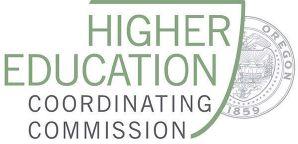
IMAGE: HECC


Our focus is you. We understand your business because we take the time to listen and assess your unique personal and business needs. Whether it’s tax and audit, wealth management, cyber security or any of our other services, our professionals can help you achieve your boldest goals.




What inspires you, inspires us. eidebailly.com






You’ve seen the outside of the new Sanford Medical Center, the 11-story, $494 million hospital that’s just south of Interstate 94.
Now, here’s the inside.
These pictures give an idea of what the medical center’s interior looks like, as well as some insight into the thinking behind the design.



Some background:
Sanford Medical Center opened on July 25, 2017. The building was one of the largest private-industry construction projects in the history of the Dakotas, Sanford Health reports.


The 284-bed facility has the capacity to add another 96 beds in the future. That would bring the total to 380 beds.
The medical center is an Adult Level II Trauma Center. The facility is pursuing a Level 1 Trauma verification, “which would make Sanford the only facility in North Dakota to garner this distinction,” according to Sanford Health.
“In fact, there is currently not a Level I Trauma Center geographically located from Minneapolis to Seattle.” PB


At Gate City Bank, we recently added a free telemedicine program as part of our health insurance package. Telemedicine gives employees and their families 24/7 access to a doctor through the convenience of their smartphone for a voice or video consult for non-emergency health needs.
In addition, the program offers online health resources, a nurse hotline and personal health advocates. The health advocates can help clarify benefits, explain medical bills, answer medical questions and more.
This first year with our telemedicine program has been successful, as we’ve heard a lot of positive feedback from our employees.
At Blue Cross Blue Shield of North Dakota, wellness programs and apps have been important in helping our members live healthier lives. We found that the most successful programs and apps are those that send “intelligent nudges” based on actionable data, specific to a member’s health needs. For example, if an individual has been sedentary for x-amount of time, or if an individual is scheduled to take an online class, a reminder is provided.
One particular program or app may not work for all individuals. Making the technology accessible at all times and offering a variety of options based on user preference is critical.
Medical experts from Altru’s Weight Management Program including a board-certified specialist in sports dietetics and an American Council on Exercise-certified medical exercise specialist.
In addition, a family nurse practitioner designed a 12-week wellness challenge for Altru Health System employees that ran from July through September of this year.
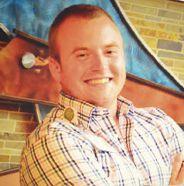


The challenge’s objectives were to create a positive culture of wellness and expose staff to resources for developing healthy lifestyle habits, all while having fun. Some 520 employees participated, of whom 73 percent were satisfied or very satisfied with the challenge and 62 percent agreed or strongly agreed that the challenge helped them develop healthier lifestyle habits.
Choice Financial believes that healthy living requires matching to each of our individual lifestyles. We offer a Wellness Reimbursement Program that pays team members for choosing the healthy living habits that suit them. Gym club memberships, personal trainers, bikes and even kayaks are just some of the common items that team members purchase with their funds. #PeopleFirst!
When it comes to wellness, we focus on simple initiatives that build toward a healthier lifestyle. One thing that was easy to execute was providing nice tumblers to all employees, each tumbler wrapped with messaging and encouragement to drink more water.
We provide these tumblers as part of our new employee onboarding as well, and it’s amazing how much “drinking water” now is being talked about and encouraged within our culture.
Another successful program has been fresh fruit. We work with local grocery stores to deliver fresh fruit weekly to most of our locations. It’s a simple investment we believe helps employees make healthier snacking choices, which in turn helps develop easy and sustainable habits.
Port: Pembina, N.D. Numbers in thousands
Overall Rank (1 = Safest)
In order to determine the safest states in America, WalletHub’s analysts compared the 50 states across 37 key safety Indicators grouped into five different categories. the data set ranges from assaults and other crimes per capita to unemployment Rates to fatalities per 100 million miles of vehicle travel to total loss amounts from climate disasters per capita.
Source: WalletHub
Icons made by Freepik from www.flaticon.com Icon made by Chanut is Industries from www.flaticon.com
consumer price index, midwest region - november 2017 (CPI-U = Consumer Price Index for All Urban Consumers)
The CPI-U for the Midwest advanced 1.9 percent from November 2016 to November 2017. The energy index, which includes motor fuel and household fuels, rose 12.8 percent, and food prices increased 1.1 percent. Excluding food and energy, the CPI-U was up 1.1 percent over the year.
Leading economic indicators, last 18 months (50.0 = growth neutral)

Source: U.S. Bureau of Labor Statistics
Unemployment rate – Seasonally adjusted United States, Minnesota, South Dakota and North Dakota

“While the November Creighton University MidAmerica Business Conditions Index – a leading economic indicator for the nine-state region stretching from Arkansas to North Dakota – declined for the month, the reading still points to healthy economic growth ahead, according to the latest monthly survey results.”
“The Business Conditions Index, which ranges between 0 and 100, slipped to a still healthy 57.2 from October’s 58.8. This is the 12th straight month the index has remained above growth neutral, continuing to point to positive growth for the region over the next three to six months.”
Source: Creighton University



























